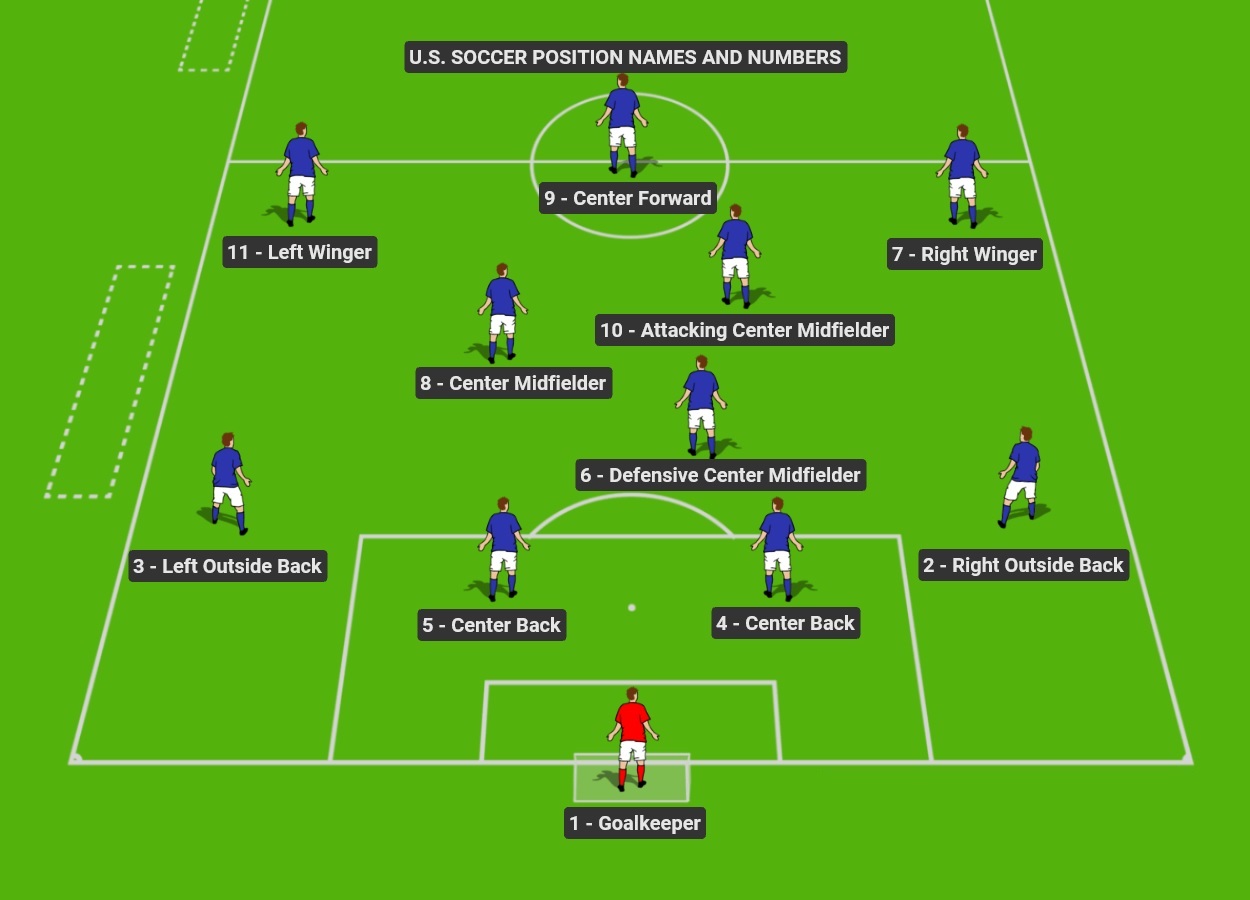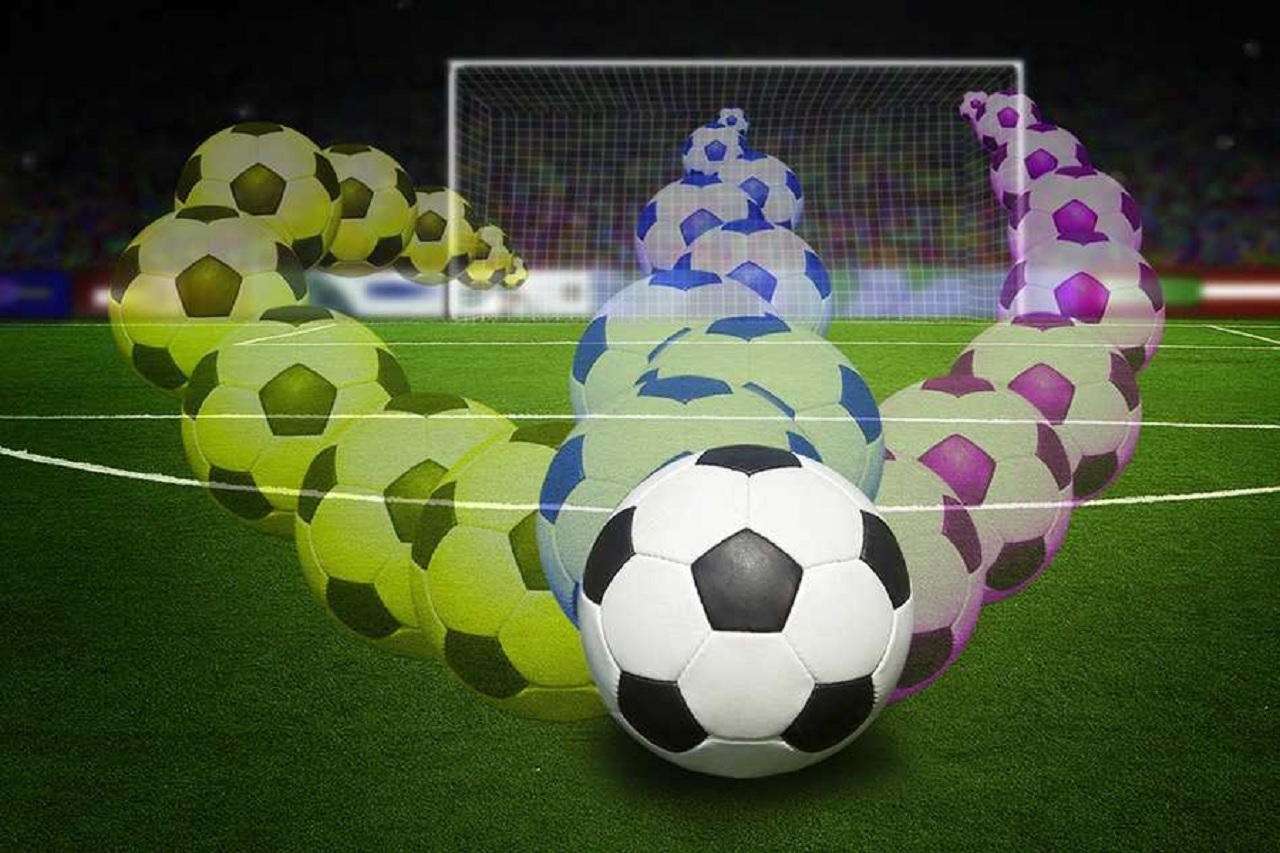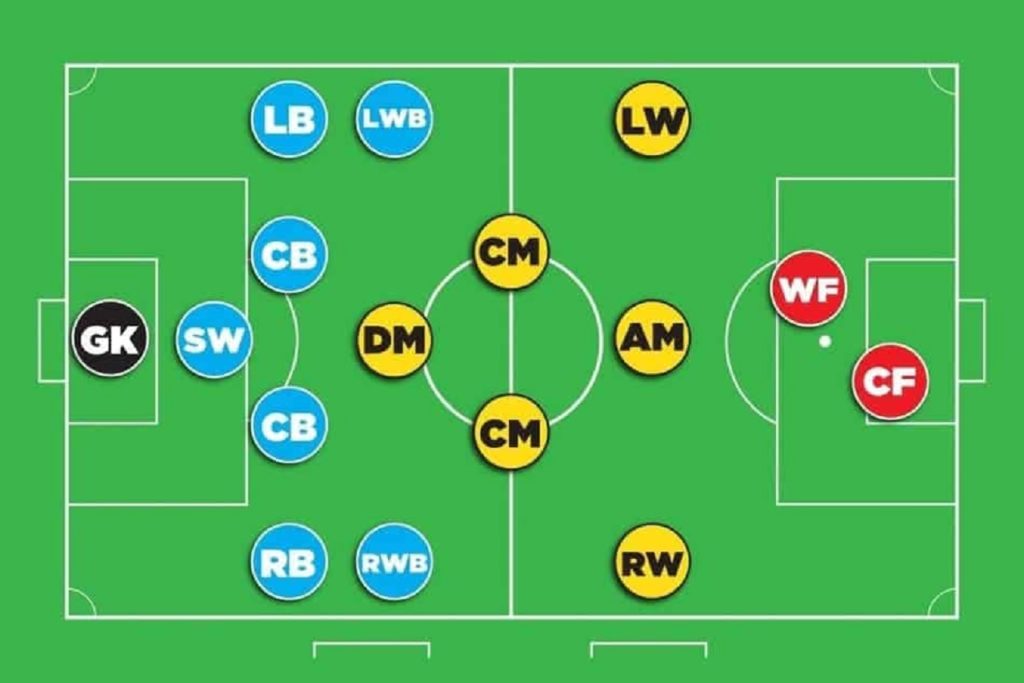When it comes to the game of soccer, the positions players assume on the field hold the key to unlocking the secrets of success. Understanding the intricacies of soccer positions and their game-changing responsibilities is crucial for any aspiring player or avid fan. From goalkeepers guarding the net to forwards seeking to score, each position plays a vital role in the team’s strategy and outcome.
In this article, we’ll explore soccer positions, their responsibilities, and unveil their game-changing secrets on the pitch. So, get ready, join us, and uncover the hidden secrets of soccer positions!
Understanding Soccer Positions

Player roles and responsibilities in soccer are vital for team success, requiring a deep understanding of positions. From goalkeepers to forwards, each position carries unique responsibilities shaping strategy and gameplay. Let’s explore soccer positions, uncover their secrets, and unleash their true potential on the field.
The Goalkeeper Position – A Last Line of Defense
In the realm of soccer, the goalkeeper holds a unique and crucial position as the last line of defense. Their responsibilities encompass protecting the goal, making critical saves, and ensuring the team’s defensive solidity. This article delves into the key responsibilities and attributes of goalkeepers, highlighting their indispensable role in the team’s success.
Shot Stopping and Reflexes
First and foremost, goalkeepers are entrusted with the task of stopping shots on goal. With lightning-fast reflexes, they showcase their agility and acrobatic abilities to make crucial saves.
Distribution and Ball Control Moreover, goalkeepers play a pivotal role in initiating the team’s attacks through accurate distribution and ball control. They are the primary distributors of the ball, launching precise long-range passes or initiating quick counterattacks with swift throws or goal kicks.
Aerial Dominance and Commanding the Box
Furthermore, goalkeepers excel in their ability to dominate the penalty area and command their defense. With their height, positioning, and vocal instructions, they assert their authority in the box, ensuring effective communication and organizing the defense during set-piece situations.
Decision-Making and Sweeper-keeper Role
Additionally, goalkeepers are required to make split-second decisions that impact the game’s outcome. They must possess the judgment to come off their line and act as a “sweeper-keeper” when needed, clearing loose balls and thwarting opposition attacks outside the penalty area.
Leadership and Communication
Moreover, goalkeepers serve as the leaders of the defense, directing and communicating with their teammates to maintain defensive shape and coordinate the team’s overall strategy. Their clear instructions and communication foster cohesion and collective responsibility among the players.
Thus, The goalkeeper position is an integral part of the team’s defensive structure, serving as the last line of defense. Their shot-stopping abilities, distribution skills, aerial dominance, decision-making, and leadership qualities make them a critical asset to the team’s success. Understanding the responsibilities and attributes of goalkeepers sheds light on the intricacies of soccer positions and the game-changing impact they have on the team’s defensive stability and overall performance.
The Defenders Position in Soccer – Shielding the Team’s Fortress
In the world of soccer, defenders hold a crucial position as the guardians of the team’s fortress. Their primary responsibility is to protect the goal and thwart the opposition’s attacks. In this article, we delve into the responsibilities of defenders, their pivotal role in the team’s success, and the key attributes that make them indispensable on the pitch.
Organizing the Defense
First and foremost, defenders are tasked with organizing the team’s defense. They coordinate with their teammates, communicate effectively, and position themselves strategically to create a solid defensive structure.
Additionally, defenders must be able to read the game and anticipate the movements of the opposing team’s attackers. Their tactical intelligence, awareness, and ability to analyze the game allow them to make crucial interceptions, block shots, and deny goal-scoring opportunities.
Marking and Tackling
Moreover, defenders excel in the art of marking and tackling. They closely shadow their assigned opponents, denying them space and time on the ball. With well-timed tackles and interceptions, defenders disrupt the flow of the opposition’s attack and regain possession for their team.
Aerial Dominance
Furthermore, defenders possess excellent aerial abilities, making them formidable in both defensive and offensive set-piece situations. Their height, timing, and positioning allow them to win aerial duels, clear the ball from dangerous areas, and even contribute to scoring goals from corner kicks and free kicks.
Distribution and Build-Up Play
Additionally, defenders play an active role in initiating the team’s build-up play. They are responsible for distributing the ball effectively from the back, making accurate passes to teammates in midfield or attack. Their vision and technical proficiency allow them to launch quick counterattacks or switch the play to exploit spaces on the field.
Thus, Defenders are the stalwarts of the team, protecting the goal and providing a solid foundation for the team’s success. Their organization, marking, tackling, aerial dominance, and distribution skills contribute significantly to the overall performance of the team. Understanding the responsibilities and attributes of defenders sheds light on the intricate dynamics of soccer positions and the impact they have on the team’s defensive stability and overall gameplay.
The Midfielders Position in Soccer – The Engine Room of the Team
The midfielders position in soccer serves as the engine room of the team, responsible for dictating the flow of the game and connecting the defense with the attack. In this article, we delve into the responsibilities of midfielders, their crucial role in the team’s success, and the key attributes that make them indispensable on the pitch.
Linking Defense and Attack
First and foremost, midfielders are tasked with linking the defense and the attack. They act as the conduit, orchestrating play and facilitating seamless transitions from defensive organization to creative attacking maneuvers.
Moreover, midfielders play a significant role in ball retention and distribution. Their exceptional passing ability, vision, and technical proficiency enable them to dictate the tempo of the game, distribute accurate long-range passes, and unlock defensive lines with incisive through balls.
Box-to-Box Presence
Furthermore, midfielders are expected to cover vast areas of the pitch, providing defensive support when needed and driving forward to support the attack. Their stamina, work rate, and tactical intelligence allow them to contribute both defensively and offensively, making them vital in maintaining team balance.
Creating Scoring Opportunities
Additionally, midfielders are often the architects of goal-scoring opportunities. Their ability to read the game, find pockets of space, and deliver precise passes in the final third can unlock defenses and create scoring chances for their teammates. They are adept at making well-timed runs into the box, providing options for crosses and finishing opportunities.
Defensive Contribution
Moreover, midfielders play an integral role in defensive organization. They press opponents, disrupt their build-up play, and provide cover for the defensive line. Their defensive contributions include tackling, intercepting passes, and regaining possession to initiate counterattacks.
Thus, Midfielders serve as the engine room of the team, seamlessly linking defense and attack. Their ability to dictate play, create scoring opportunities, contribute defensively, and maintain team balance is vital for the team’s success. Understanding and appreciating the responsibilities and attributes of midfielders provides insight into the intricate dynamics of soccer positions and their impact on the overall performance of the team.
The Forwards Position in Soccer – Lighting Up the Scoreboard
The forward position in soccer is characterized by its pivotal role in lighting up the scoreboard and spearheading the team’s attacking efforts. This article delves into the responsibilities of forwards, their impact on the game, and the key attributes that make them formidable goal-scoring threats.
Goal-Scoring Prowess
First and foremost, forwards are responsible for one thing: scoring goals. They exhibit a lethal combination of clinical finishing, intelligent positioning, and versatility, making them the main protagonists in lighting up the scoreboard.
Moreover, forwards play a crucial role in creating scoring opportunities for themselves and their teammates. Their ability to find open spaces, exploit defensive vulnerabilities, and make precise runs in the attacking third increases the team’s chances of finding the back of the net.
Attributes of Elite Forwards
Furthermore, elite forwards possess exceptional speed and agility, allowing them to outrun defenders and make blistering runs in behind the defensive line. Their technical proficiency enables them to strike the ball with power and accuracy, while their vision and creativity enable them to provide crucial assists to teammates.
Game-Changing Impact
Additionally, forwards have the ability to single-handedly change the course of a match. Their electrifying performances, awe-inspiring goals, and ability to seize pivotal moments can shift the momentum in favor of their team.
Collaboration with Teammates
Moreover, forwards must establish a strong understanding and communication with their teammates, particularly midfielders. The synergy between the two positions is essential for seamless attacking plays, quick one-twos, and effective link-up play that can dismantle opposing defenses.
Thus, The forward position in soccer holds immense responsibility for lighting up the scoreboard. Through their goal-scoring prowess, exceptional attributes, and collaboration with teammates, forwards make a game-changing impact.
Their ability to find the back of the net not only boosts team morale but also dictates the outcome of matches. Understanding and appreciating the role and responsibilities of forwards is crucial in comprehending the dynamic nature of soccer positions and their impact on the beautiful game.
Game-Changing Responsibilities: Unveiling the Impact of Soccer Positions

In the world of soccer, each player’s position carries unique game-changing responsibilities that significantly impact the outcome of matches. This article delves into the intricacies of soccer positions and their respective responsibilities, shedding light on the influential roles players play on the field.
The Impact of Soccer Positions
Soccer positions encompass a wide range of roles, including defenders, midfielders, forwards, and goalkeepers. Each position has distinct responsibilities that shape the game. Defenders serve as the first line of defense, responsible for preventing the opposing team from scoring. They demonstrate their defensive prowess through well-timed tackles, interceptions, and strategic positioning.
Midfielders play a vital role in orchestrating play, controlling the tempo, and connecting the defense with the attack. They contribute with their passing ability, vision, and creativity. Forwards, on the other hand, focus on scoring goals and creating scoring opportunities.
Their speed, agility, and clinical finishing skills can change the course of a match. Goalkeepers, the last line of defense, possess the responsibility of stopping shots, organizing the defense, and initiating counterattacks.
The Game-Changing Responsibilities
Each soccer position carries unique game-changing responsibilities that impact the team’s success. Defenders must thwart the opposition’s attacks, maintain defensive shape, and provide cover to their teammates. Midfielders drive the team forward, create scoring opportunities, and contribute to both attacking and defensive phases of play.
Forwards must showcase clinical finishing, intelligent positioning, and the ability to create space for themselves and their teammates. Goalkeepers act as the team’s last line of defense, making critical saves, organizing the defense, and distributing the ball effectively.
The Collective Impact
The collective efforts of players in various positions create a cohesive unit that can dominate matches. The impact of soccer positions extends beyond individual roles. The collaboration between defenders, midfielders, and forwards is essential for a well-rounded team. Effective communication, understanding, and coordination between positions contribute to a seamless flow of play, increased scoring opportunities, and a solid defensive structure.
Thus, Soccer positions carry game-changing responsibilities that significantly influence match outcomes. Defenders, midfielders, forwards, and goalkeepers each contribute their unique skills and attributes to the team’s success. By embracing their roles and responsibilities, players in different positions come together to create a formidable force on the field.
The collective impact of soccer positions underscores the intricate nature of the sport and highlights the importance of understanding and appreciating each player’s game-changing responsibilities.
Defensive Organization: The Bedrock of Solid Soccer Positions
In the realm of soccer positions, defensive organization serves as the bedrock for a solid and successful team. It involves the collective responsibility of players to maintain a strong defensive structure, thwarting the opposition’s attacks and minimizing goal-scoring opportunities. This article delves into the intricacies of defensive organization, emphasizing its significance across various soccer positions and the responsibilities it entails.
The Role of Soccer Positions in Defensive Organization
Soccer positions, including defenders, midfielders, and even forwards, play essential roles in defensive organization. Defenders are at the forefront, acting as the last line of defense and guarding the team’s fortress.
Midfielders contribute by tracking back, providing support to defenders, and disrupting the opposition’s attacking flow. Even forwards play a part by pressing the opposition’s defenders and forcing them into making hasty decisions, disrupting their build-up play.
Responsibilities of Players in Defensive Organization
Players in different positions embrace specific responsibilities when it comes to defensive organization. Defenders are tasked with preventing the opposing team from breaching the defensive line and scoring goals. This involves disciplined positioning, well-timed tackles, and effective marking to deny the opposition goal-scoring opportunities.
Midfielders aid in defensive duties by intercepting passes, closing down space, and providing defensive cover. Even forwards contribute by applying pressure on the opposition’s defenders, making it harder for them to build attacks.
Key Elements of Defensive Organization
Effective defensive organization relies on several key elements. Communication is crucial, as players must effectively communicate with each other to coordinate their movements and maintain defensive shape.
Discipline is vital, as players must adhere to their assigned roles and maintain positional awareness. Anticipation allows players to read the game, anticipate passes, and intercept the ball. Finally, teamwork and trust among players create a cohesive defensive unit that is difficult for the opposition to break down.
Influence on Match Outcomes
Defensive organization greatly influences the outcomes of matches. A solid defensive structure provides a foundation for the team to build upon and creates a platform for attacking opportunities. By minimizing the opposition’s scoring chances, players in defensive positions contribute to their team’s success and increase the likelihood of achieving positive results.
Thus, Defensive organization is a fundamental aspect of soccer positions, highlighting the collective responsibility of players to maintain a strong defensive structure. Defenders, midfielders, and even forwards play crucial roles in this aspect, contributing to the team’s overall defensive solidity.
By embracing their responsibilities and focusing on key elements such as communication, discipline, anticipation, and teamwork, players can effectively organize their defense and enhance their team’s chances of success. Thus, the importance of defensive organization cannot be understated in the intricate tapestry of soccer positions and their game-changing responsibilities.
Playmaking and Control: Orchestrating Success in Soccer Positions
In the world of soccer positions, playmaking and control are crucial elements that contribute to a team’s success. They involve the ability to orchestrate attacks, maintain possession, and influence the outcome of matches.
In this article, we will delve into the intricacies of playmaking and control, exploring their significance across different soccer positions and the responsibilities they entail.
The Role of Soccer Positions in Playmaking and Control
Soccer positions, including midfielders, forwards, and even defenders, play a vital role in playmaking and control. Midfielders are known as the engine room of the team, responsible for driving the team forward and creating scoring opportunities.
Forwards contribute by making intelligent runs, holding up the ball, and creating space for teammates. Defenders also play a part by initiating attacks from the back and maintaining possession through accurate passing.
Responsibilities of Players in Playmaking and Control
Players in various positions embrace specific responsibilities when it comes to playmaking and control. Midfielders, as the primary playmakers, must exhibit exceptional vision, technical proficiency, and decision-making skills to orchestrate attacks and maintain possession.
Forwards are entrusted with the task of receiving and distributing the ball effectively, while also creating scoring opportunities for themselves and their teammates. Defenders contribute by initiating build-up play, transitioning from defense to attack, and ensuring the team retains possession.
The Key Elements of Playmaking and Control
Effective playmaking and control require several key elements. Vision is crucial, as players must have the ability to spot openings and make accurate passes. Technical proficiency allows players to execute precise and controlled passes, dribbles, and shots.
Tactical intelligence helps players read the game, make strategic decisions, and exploit the opposition’s weaknesses. Teamwork and communication are also essential, as players must coordinate their movements and communicate effectively to maintain control.
Maximizing Opportunities and Influencing Matches
Playmaking and control are instrumental in maximizing scoring opportunities and influencing the outcome of matches. Players must create space, time their passes, and make incisive movements to unlock defenses. By maintaining possession and dictating the rhythm of the game, players can dominate their opponents and create scoring chances.
Thus, Playmaking and control are integral components of success in soccer positions. Midfielders, forwards, and defenders all play crucial roles in orchestrating attacks and maintaining possession. By embracing their responsibilities and honing their skills, players can influence matches, create scoring opportunities, and lead their teams to victory.
So, let’s appreciate the art of playmaking and control, recognizing their significance in soccer positions, and witness the magic unfold on the field of play.
Clinical Finishing: The Art of Soccer Positions
In the world of soccer positions, clinical finishing stands as a vital skill that separates the great from the good. It involves the ability to convert goal-scoring opportunities into goals with precision, composure, and deadly accuracy.
Here, we will delve into the depths of clinical finishing, exploring its significance across various soccer positions and the responsibilities it entails.
The Role of Soccer Positions in Clinical Finishing
Soccer positions, such as forwards, midfielders, and even defenders, play a pivotal role in clinical finishing. Forwards, known for their instinctive positioning and predatory instincts, excel in putting the ball in the back of the net.
Midfielders contribute by creating scoring opportunities through their technical proficiency and playmaking skills. Defenders, especially during set-piece situations, utilize their aerial ability and positioning to add to the team’s clinical finishing prowess.
Responsibilities of Players in Clinical Finishing
Players in different positions embrace specific responsibilities when it comes to clinical finishing. Forwards must exhibit exceptional technical proficiency, make intelligent runs, and capitalize on goal-scoring chances.
Midfielders are entrusted with penetrating the opponent’s defense, striking the ball cleanly, and providing key assists to their teammates. Defenders, on the other hand, contribute by utilizing their defensive awareness and timing to score crucial goals during set-piece situations.
The Key Elements of Clinical Finishing
Precision plays a crucial role in clinical finishing, as players aim to place the ball accurately in the corners of the net. Technique, body positioning, and focus are essential for consistently finding the back of the net. Composure is equally important, allowing players to remain calm under pressure and make calculated decisions.
Maximizing Goal-Scoring Opportunities
Recognizing and capitalizing on goal-scoring opportunities is vital in clinical finishing. Players must create space, exploit defensive vulnerabilities, and position themselves strategically to receive the ball effectively. By doing so, they enhance their team’s chances of scoring goals and achieving victory.
Thus, Clinical finishing plays a game-changing role in soccer positions, with forwards, midfielders, and defenders all contributing to the team’s success. By embracing their responsibilities and honing their skills, players can convert opportunities into goals with deadly accuracy. So, let’s appreciate the art of clinical finishing, recognizing its significance in soccer positions, and witness the magic unfold on the field of play.
Conclusion:
In conclusion, understanding the secrets of soccer positions and their game-changing responsibilities is crucial for players, coaches, and enthusiasts alike. Delving into position intricacies unlocks a deeper appreciation for the strategic dynamics at play on the field.
Goalkeeper’s vigilant protection and forwards’ clinical finishing prowess contribute uniquely to the team’s success in soccer. The collective efforts of players in their respective roles create a cohesive unit that strives for victory.
Embrace soccer positions’ responsibilities and secrets, whether you’re a player striving for excellence or a fan seeking deeper understanding. Get involved, support your team, and witness the magic unfold on the pitch. The world of soccer positions awaits, and it’s time to make your mark!

